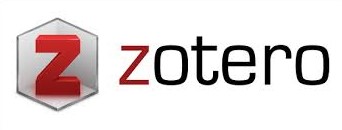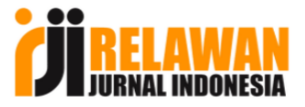ANALISIS PENDAPATAN DAN EFISIENSI INDUSTRI GULA MERAH DI DESA CISUMUR KABUPATEN CILACAP
DOI:
https://doi.org/10.54199/pjeb.v3i01.129Keywords:
Efficiency; Production cost; Brown sugarAbstract
The home industry is one part of the community's efforts to improve the welfare and standard of living of the community, especially for the majority of people living in rural areas who generally belong to the economically weak group. So it is necessary to increase income by running an efficient business.
Based on data from Cisumur Village, it is known that there are 352 craftsmen for the brown sugar industry. To facilitate the research, the brown sugar craftsmen are grouped so that they become more homogeneous. Brown sugar artisans are grouped into two groups based on their business pattern system, the first group of artisans with a self-owned tree business system of 110 craftsmen, the second group of craftsmen with a coconut tree rental business system of 242 craftsmen. Based on the number of each member in the population according to the group's business pattern system, it is determined that the number of samples in the first group is 110 x 15% = 16.5 or 16 craftsmen, for the sample in the second group is 242 x 15% = 36.3 or 36 craftsman.
The data analysis method used is quantitative using income analysis and business efficiency analysis/RC Ratio. Production costs are calculated by the formula TC = FC+VC, gross income or revenue is formulated by TR=PXQ and net income or profit is = TR-TC, RC Ratio = TR + TC.
The results showed that the brown sugar industry in Cisumur Village was economically profitable and could provide income for the crafters. Overall the brown sugar industry in each group in Cisumur Village is efficient, with an average level of efficiency Return Cost Ratio (R/C) of 1.66 for the group with self-owned tree business pattern, while for the group with tree rental business system of 1.66 1.86. so it can be concluded that the tree-leasing business pattern is more efficient than the tree-owned system.
References
Ari Kurniati. 2006. Efisiensi dan Pendapatan Usaha Industri Gula merah di Desa Pageraji Kecamatan Cilongok Kabupaten Banyumas.
Arsyad, Lincolin. 1999. Ekonomi Pembangunan. Yogyakarta: Bagian Penerbitan Sekolah Tinggi Ilmu Ekonomi YKPN.
Bishop, C.E dan W.D Tausaint. 1979. Pengantar Analisa Ekonomi Pertanian. Mutiara. Jakarta.
Budi Santoso, Hieronymus, 1993, Pembuatan Gula Kelapa. Kanisius: Yogyakarta
Mubyarto. 1995. Pengantar Ekonomi Pertanian. LP3ES: Jakarta
Mubyarto dan Daryanti, 1991. Gula Kajian Sosial Ekonomi. Aditya Media. Yogyakarta.
Nurimansyah. 1994. Ekonomika Industri Persaingan Monopoli dan Regulasi. LP3ES, Jakarta.
Paul A. Samuelson dan William D. Nordhaus, 1996. Ekonomi Mikro. Erlangga. Jakarta.
Pusat Penelitian Perkebunan Gula Indonesia (P3GI). 2008. Konsep Peningkatan Rendemen untuk Mendukung program Akselerasi Industri Gula Nasional
Said, Ahmad. 2005. Pembuatan Gula Kelapa. Ganesha Exact. Bandung.
Sadono Sukirno. 2005. Mikro Ekonomi Pengantar. PT Raja Grafindo persada, Jakarta.
Sudarti. 2009. Jurnal Analisa Tingkat Efisiensi Usaha Home Industri Kendang Jimbe di Kelurahan Tanggung Kecamatan Kepanjen Kidul Kota Blitar.
Soekartawi. 1991. Agribisnis Teori dan Aplikasinya. Rajawali Press: Jakarta.
_________. 1994. Analisis Usahatani. Penerbit Universitas Indonesia Press. Jakarta.
Suhardiyono, L. 1995. Tanaman Kelapa, Budidaya dan Pemanfaatannya. Kanisius. Yogyakarta
Sukirno, S. 2004. Pengantar Teori Mikro Ekonomi. LPFE Universitas Indonesia: Jakarta
Suparmoko. 1992. Pengantar Ekonomi Mikro. BPFE, Yogyakarta.
Susilo Dwi Jatmiko. (2009). Analisis Efisiensi dan Pendapatan antara Perajin Gula Semut dan Dula Cetak di Desa Cilongok Kecamatan Cilongok Kabupaten Banyumas. Skripsi FE UNSOED. Purwokerto. (Tidak dipublikasikan).
Umar. Husein. 2000. Riset Strategi Perusahaan. PT. Gramedia Pustaka Utama, Jakarta.
Downloads
Published
How to Cite
Issue
Section
License
Copyright (c) 2023 Universitas Perwira Purbalingga

This work is licensed under a Creative Commons Attribution-NonCommercial-ShareAlike 4.0 International License.























